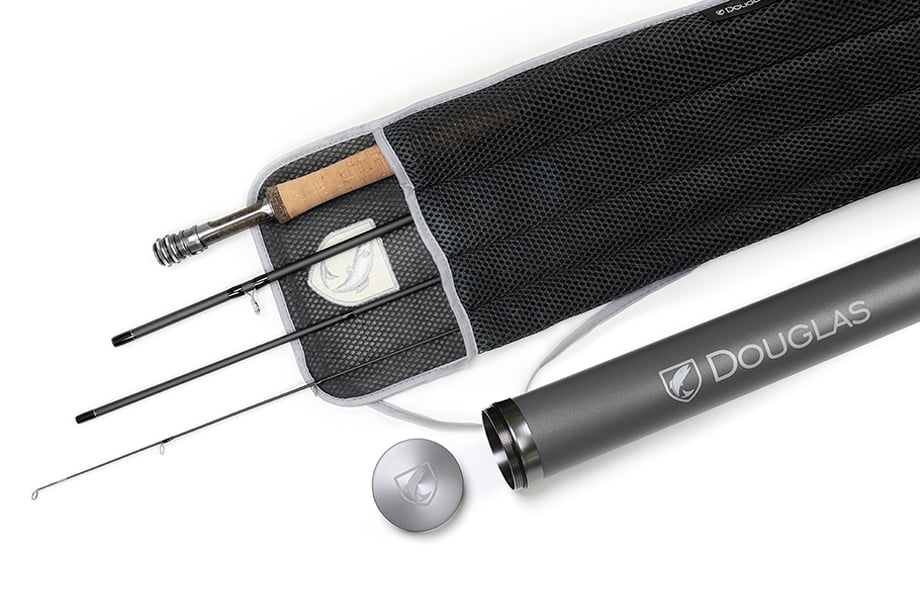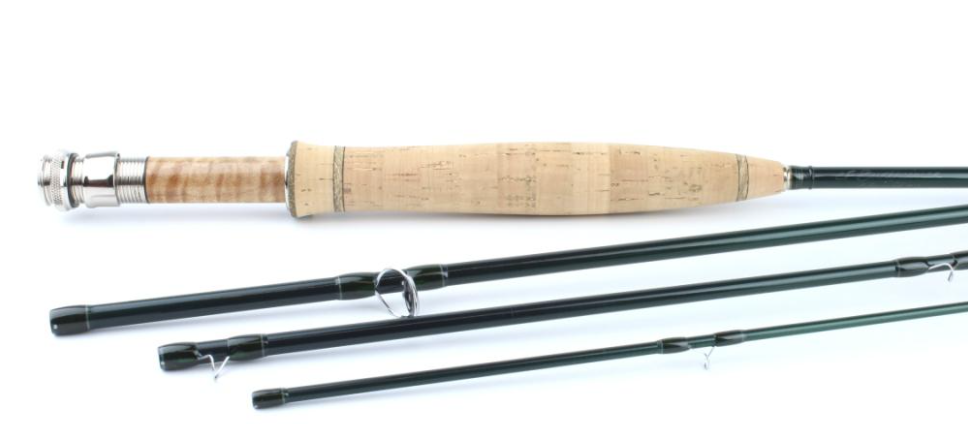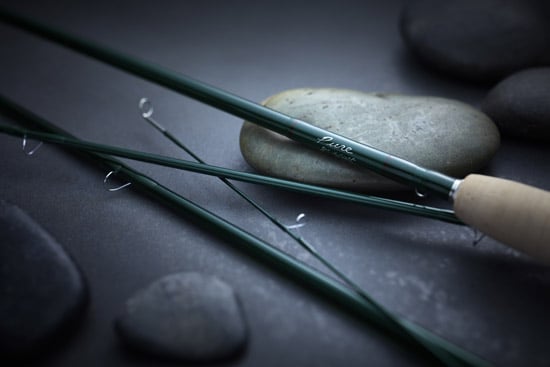The Best Small-Stream Dry Fly Rods for You
I grew up a half-hour drive from a half-dozen trout streams. The streams were—and some still are—relatively hidden gems, overshadowed by the area’s big-name rivers. My dad took me to each creek starting when I was about five years old. He showed me the good runs, the pools where big trout lived, and which landowners’ fence to cross without fear of a trespassing charge.
While each piece of water had its differences, the common denominator was that my dad only fished dry flies. Since he taught me to fish, I only fished dry flies, too. From a young age I had the fortune of an education in not only dry fly fishing, but in the gear and skill required to do it well. Now, decades after those growing-up years, I still fish dries as often as possible. One rising trout is enough for me to put away the nymphs and streamers and go back to my roots.
All this is to say that I’ve spent many years fishing dry flies, and just as many fishing rods designed to throw dry flies with particular grace. From vintage bamboo to the latest-and-greatest graphite, I’ve fished upwards of three dozen different dry fly rods over the years. Each has its own unique abilities, and I’ve found a few favorites.
What I’ve also found, however, are the characteristics a dry fly rod needs in order to do its job well. Good dry fly rods need:
- Solid, stiff butt section: Without a solid, stiff butt section, the rod falls apart on longer casts or when fighting bigger fish. Add wind to the equation and you’re left with an expensive stick that doesn’t put your flies where you want them.
- Supple tip: Fishing dry flies often means fishing lighter leaders. A good dry fly rod has a soft, supple tip section that absorbs the runs and head-shakes of big trout while protecting delicate tippets.
- Progressive action: The best dry fly rods are quick and fast in close but slower and deliberate at longer distances. This ensures the best presentation possible and provides a wonderfully fun casting experience. A rod with progressive action also means it has the backbone to power through wind or to handle larger foam flies.
- Accuracy: While accuracy lies largely in the realm of the angler, some rods are inherently more accurate than others. A great example of this is the H3 rods from Orvis. Those rods were designed to have higher torsional stability (which means they move less side-to-side while casting) and in the right hands, they’re precision-casting instruments.
I picked those four features because they’re the characteristics I depend on for success regardless of where I’m fishing. Whether it’s on the Henry’s Fork or a small, tumbling brook in Wyoming, if I’m fishing dries I need a rod that’s accurate, with a supple tip, a solid butt section, and a sweet action.
Those aren’t the only variables in the dry fly rod equation, though. The length and weight of the rod play a huge part in choosing your next dry fly stick as does the type of water you most often fish.
Length and Weight
What would you say if I told you my favorite dry fly rod is an 8’6″ 6-weight? That’s a far cry from the oft-heralded 8′ 4-weight rods that dominate the dry fly category.
I love that 8’6″ 6-weight, though, because it has every quality I listed above. The butt section has the power to turn big fish, but the tip is so supple that I don’t hesitate to fish 7x tippet on it. Even on small streams, it doesn’t feel like too much rod.
On the opposite end, I own a 6’6″ 2-weight that’s an absolute blast on small water. Both rods have their niche, their spot where they really shine, but if I had to pick just one for small-stream dry fly fishing, it’d be the 6-weight.
I’d pick that rod because I’ve found—through a lot of trial and error—that the lighter-weight rod you use, the less stealthy you’re able to be at close-to-medium distances. To understand that, think about how a modern weight-forward fly line is tapered. The mass of the line is concentrated in the head, which is usually short and heavy. On 5 and 6-weight rods, that aggressive taper is necessary.
On lighter-weight rods, however, that taper overloads the rod at close-to-medium distances, meaning you either need to pull back on your cast just before it hits the water, or fish a longer-than-normal leader to compensate for the splash your heavy weight-forward fly line makes.
That observation may very well be an indictment on my casting ability—I don’t profess to be an expert caster or angler—but it’s a trend I’ve noticed with my light-weight rods. Fishing a double-taper line, or a less-aggressive weight-forward taper, mitigates the out-of-balance casting you’ll often feel with a modern weight-forward line on a light rod.
In that same vein, I’ve found that staying away from long, light rods is usually a good choice (a few exceptions to this rule exist). When you’re casting 40 or more feet, it’s nice to have a rod with the power to lift that line and cast again with minimal false casting. Many of the 9′ 4-weight rods I see advertised as dry fly sticks just don’t have the power to manage that much line. They also tend to be less stable, therefore less accurate, and less adept at handling a headwind.
All that is to say I’d highly suggest rods in the 7′-to-8’6″ range, in weights 4-6. There’s a reason so many of the classic bamboo rod tapers fall in that sweet 7’6″ 4-weight category. That’s the perfect length and weight combination for small-stream dry fly fishing.
Type of Water
The only caveat to the length and weight recommendations I made above is this—the type of water you most often fish. If you live somewhere like I do where the wind always blows, even your small streams will require a 5-weight rod. If your small streams are more pocket water than they are runs, pools, and riffles, then I’d definitely encourage a 9 or even 9’6″ rod. Generally speaking, though, most small streams don’t require such specific equipment. Just consider the type of water you’re most likely to fish before you set down some cash on a new dry fly rod.
Recommended Rods
This list features rods I’ve personally fished and would recommend to anyone—newcomer and veteran anglers alike. As you start looking for a new small-stream dry fly rod, hopefully this list gives you some good jumping-off points.
Douglas Sky G 8’6″ 4-weight
- Wonderfully fun to fish
- Smooth action
- Delicate tip section
The Douglas Sky G lineup of rods is one of my personal favorites. These are lightweight, powerful, fun sticks that somehow have a beefy butt section but a perfectly soft tip. While they are definitely fast-action, it’s still nicely progressive. The 8’6″ 4wt is their best model for fishing dry flies on small streams. This is the flagship rod for Douglas, which is reflected in the $845 price tag. That’s still a few hundred bucks cheaper than other rods on the market, though.
Tom Morgan Rodsmiths 8’6″ 5-weight
- Supreme build quality
- Absolutely flawless action
- Built specifically for trout streams
Tom Morgan Rodsmiths is the company started by the late Tom Morgan after he sold the R.L. Winston Rod Co. in the early ’90s. The new owners of TMR carry on Tom’s legacy, crafting rods that meet his exacting specifications in build quality and performance. Tom grew up fishing the spring creeks around Ennis, Montana, and all of his rods—including many of the early Winstons—were built with those streams in mind. Tom once told me that the only good fly rod is a good fishing rod; it doesn’t matter how well it casts on the lawn. I own this exact model, and it’s one of my most cherished possessions. TMR offers its custom rods for $1,650.
C.F. Burkheimer DAL Classic Trout 8’3″ 4-weight
- Great build quality
- Amazing feel in-close
- Fantastic action
Burkheimer rods have quietly carved out a niche among guides and anglers in the Pacific Northwest; specifically, the folks chasing westslope cutthroat trout. I first cast a Burkheimer at a fishing show in Salt Lake City, and I’ve salivated over them ever since. They’re incredibly smooth with a surprising amount of power in the butt section. They’re not cheap, but they’re heirloom-quality pieces of functional art. A Burkheimer Classic Trout can be had for $950.
Fenwick Aetos 8′ 4-weight
- Wallet-friendly
- Surprisingly good action
- Great tippet protection
The Fenwick Aetos family of fly rods is one of the best I’ve ever used, and it’s priced unbelievably well. These rods are a bit on the faster side, but they’re still great for casting small dry flies. Every time I bust out the Aetos, I’m always surprised at how much performance Fenwick packed into such an affordable package. An Aetos will set you back only $199.
R.L. Winston PURE 8′ 4-weight
- Classic Winston action
- Soft tip
- Powerful butt section
A Winston rod in an 8′ 4-weight configuration might just be the most perfect dry fly rod ever made. These rods come from the storied history of the R.L. Winston Rod Co., which started in San Francisco and moved to Twin Bridges, Montana in the 1970s. The PURE is the company’s latest light-line dry fly rod, and it rivals their legendary IM6 rods as their best effort ever. I own a few vintage Winston IM6 rods, and the PURE 8′ 4-weight is just as good—if not better—than each one. The classic Winston action, combined with a surprisingly powerful butt section, provides a fishing experience that’s almost unmatched. The Winston PURE is available to you for $895.
Other Options
These rods are also fantastic dry fly sticks that deserve your consideration if none of the above strike your fancy.
- Sage Trout LL 8’6″ 4-weight: $925.00
- Scott G Series 8’8″ 4-weight: $895.00
- Redington Butter Stick 7’6″ 4-weight: $279.00
- Thomas & Thomas Avantt 8’6″ 4-weight: $875.00
- Orvis H3F 8’6″ 4-weight: $998.00
While I know this is far from a comprehensive list (I’ll cover fiberglass rods in another piece), this should give you a good place to start looking for the best dry fly rod for you.
















